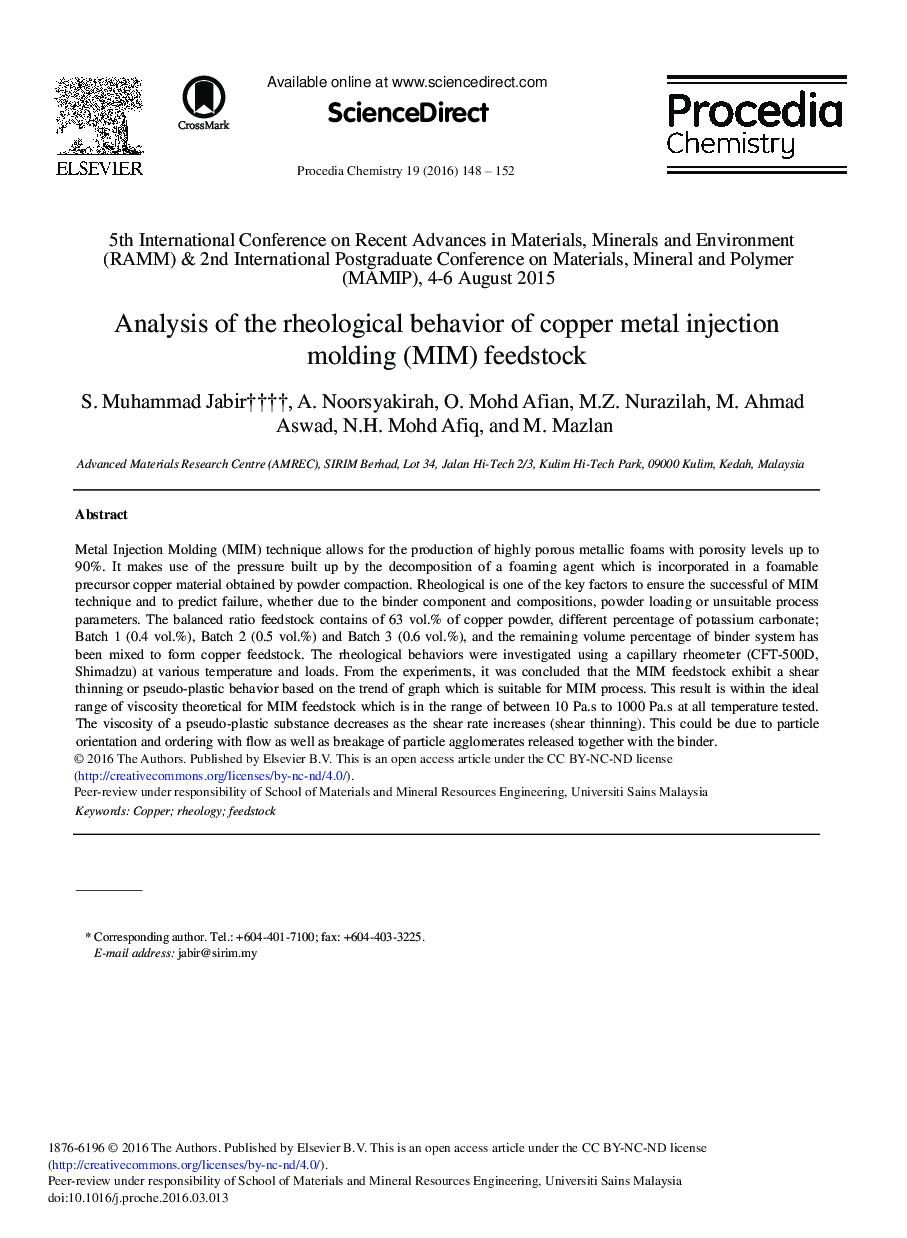| Article ID | Journal | Published Year | Pages | File Type |
|---|---|---|---|---|
| 239806 | Procedia Chemistry | 2016 | 5 Pages |
Metal Injection Molding (MIM) technique allows for the production of highly porous metallic foams with porosity levels up to 90%. It makes use of the pressure built up by the decomposition of a foaming agent which is incorporated in a foamable precursor copper material obtained by powder compaction. Rheological is one of the key factors to ensure the successful of MIM technique and to predict failure, whether due to the binder component and compositions, powder loading or unsuitable process parameters. The balanced ratio feedstock contains of 63 vol.% of copper powder, different percentage of potassium carbonate; Batch 1 (0.4 vol.%), Batch 2 (0.5 vol.%) and Batch 3 (0.6 vol.%), and the remaining volume percentage of binder system has been mixed to form copper feedstock. The rheological behaviors were investigated using a capillary rheometer (CFT-500D, Shimadzu) at various temperature and loads. From the experiments, it was concluded that the MIM feedstock exhibit a shear thinning or pseudo-plastic behavior based on the trend of graph which is suitable for MIM process. This result is within the ideal range of viscosity theoretical for MIM feedstock which is in the range of between 10 Pa.s to 1000 Pa.s at all temperature tested. The viscosity of a pseudo-plastic substance decreases as the shear rate increases (shear thinning). This could be due to particle orientation and ordering with flow as well as breakage of particle agglomerates released together with the binder.
